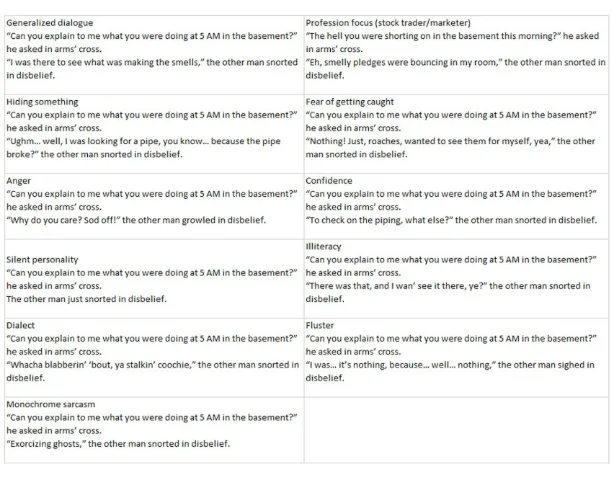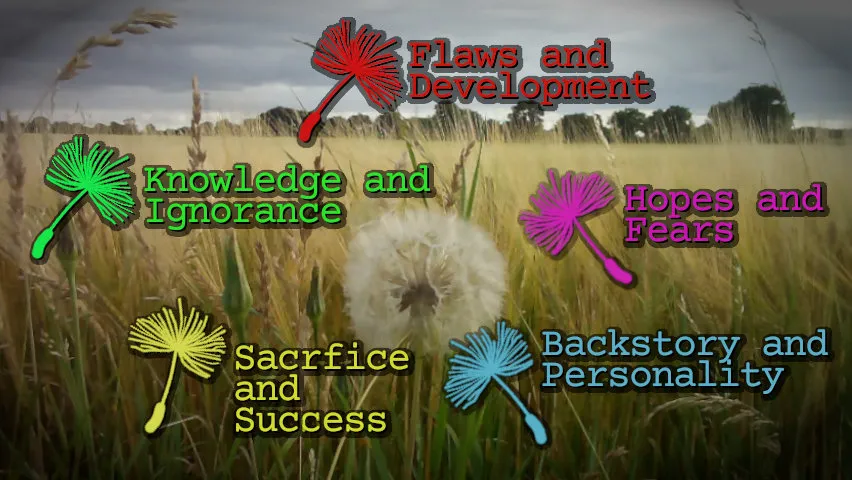If you’re just laying the ink upon the page, the stroke upon the screen, then surely you still haven’t collided with the wall of character dialogue.
Creating dialogue is a sort of art, and for it to be beautiful, realistic and engaging, you just have to give your best and learn endlessly.
Publishers will mostly tell you to tone down dialects and not to use many contractions, since it’d annoy readers and get them to stop reading.
I call bull on this, since characters having dialect and using certain types of contractions instills the personality and special tints of those characters. It may annoy readers, who just want to be in the flow of quick reading through lines (skimmers), but is it worth it for you to bend into the intersubjective pressure of social validation?
People will like your work, people will hate your work. Do you know how The Road, by Cormac McCarthy, reads out? There are no commas, semi colons or dialogue tags. Dialogue will also be on the same paragraph, regardless if it’s a different character speaking.
And yet it works, it adds to the atmosphere of the forsaken world of Cormac’s imagination. Any editor would’ve said he’s crazy and that his book would need formatting and proper line edits, but he obviously didn’t care.
How to make a character stand out?
Can I say it’s easy? It’s easy! Well, no. Lots of aspects must be taken to mind, but I will let you in on a little secret technique for you to use when establishing and filling dialogue.
Establish your characters’ personalities and understand the characters, during the writing process, to how they’d think and act. Don’t focus on how you’d write the dialogue, focus on just giving the proper reactions and placeholder words to the return of your real work.
But they now all sound the same!
Well, after writing the dialogue between characters in a chapter or the whole book, it’s now time to focus entirely upon the words between those dialogue tags.
I want you to establish what your characters have lived through, their education, their ex-jobs or current job. Is it a mechanic who curses and tends to use industry-specific words for replacement of general ones?
Is your character unable to articulate well and uses here and there for position, while never specifying an object by its name and just saying that or thing. Does your character trail off when talking, or easily gets flustered to a stutter?
Examples of Dialogue

Okay, so what about them?
So you’ve now seen some examples of what was being talked about, but it’s too much and you’re annoyed at the volume of how much you have to think about. Wait-wait, stop. You don’t put all these variants into one character, no-no.
You choose how to write a character, and you stick to what you’ve chosen, while logging your choice so you’d remember you were writing the character in such characterization, if time were to make you forget.
So the only thing you ought to do is to just decide on how you want to write dialogue for a character and just repeat it for all their words and reactions.
I had personally replaced all words of action like go, move, come, run with the word haggle for a specific character who was a salesperson. It worked like a charm.
Or I’d get a character to overuse the f-word in many twists and unique ways, thus annoying me myself to extent’s reach of me wanting to smash his mouth in.
Isn’t it simple?
But I was told to keep it clean and simple so even grandma could understand!
Why would you want grandma to be reading your work? I guess if it was aimed at the elderly, sure, but if the target demographics isn’t such, why would you even consider writing dialogue for grandma?
I agree tho, overusing dialogue techniques can lead to a desynced flow of the reader’s pace, and such could prove to be a negative experience, unless the story plot is incredible. If you have solid plot, you can even get away with editing sewage, although it isn’t advised for.
So the answer is balance?
Yes, like all things should be. Insert Thanos here. Just like in showing and telling, we mustn’t overstep the unspoken thresholds, otherwise we’d create a boring legal document with telling, and an encrypted work of purple prose’s showing.
Find what drives your characters, develop their past and integrate all of their lives in their words.
Just a little effort can transform boredom into art, into your sacred results. Cherish your craft, admire your effort.



